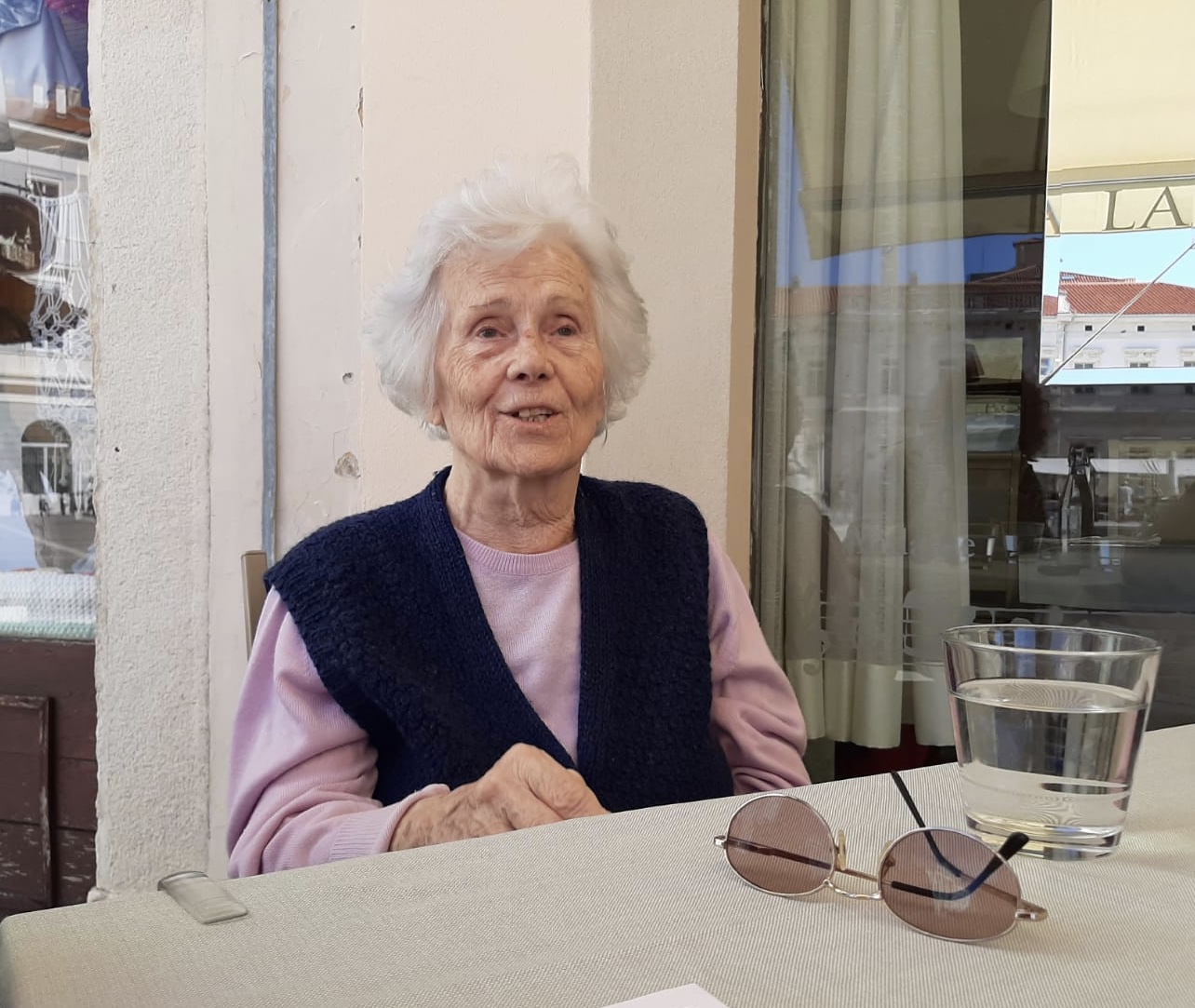Presentato a Pirano il libro “Oltre Trieste” dell’autore Giorgio Rosso Cicogna
Festa dello sport e della cultura
09/07/2019
Ida Davanzo, una vita di ricordi
09/12/2019
Il libro “OLTRE TRIESTE – storie di famiglia e di vita vissuta, un secolo attraverso molte frontiere” è approdato a Pirano, la città da cui è originaria la famiglia paterna dell’autore, venerdì 6 settembre 2019. L’Ambasciatore d’Italia a Lubiana, Paolo Trichilo, ed il critico letterario Enzo Santese sono intervenuti nella prestigiosa sede della Comunità Italiana, a Casa Tartini appena rinnovata, per una presentazione nella sala maggiore, affollata come nelle grandi occasioni.L’Ambasciatore Trichilo, già collega dell’autore, ha rievocato le vicende del nonno piranese, laureato in Medicina a Vienna e deportato in Stiria con la famiglia all’inizio della Prima Guerra Mondiale per la sua fede irredentista: vicende narrate intercalandole con la Storia di Trieste dell’ Istria, anche attraverso una serie di incontri ravvicinati con i veri protagonisti, come l’Imperatore Francesco Giuseppe e la sua figlia prediletta Valerie, nonché l’erede al trono Francesco Ferdinando, a Portorose per l’inaugurazione del Grand Hotel Palace; ed ancora Alcide De Gasperi, allora giovanissimo Deputato al Parlamento asburgico.
Da parte sua, il professor Santese ha evidenziato lo stile sempre scorrevole della narrazione che esprime una lodevole proprietà di linguaggio, con misurato distacco e con una punta di ironia, nel presentare le vicende in cui Giorgio Rosso Cicogna è stato osservatore privilegiato o protagonista, nella sua carriera diplomatica attraverso la Prima Repubblica, con personaggi che hanno fatto la Storia in Italia ed all’estero: Colombo, Andreotti, Rumor, Marcora, Granelli, Cossiga; ed anche Nixon, Kissinger, Fidel Castro, Indira e Rajiv Gandhi, e tanti altri.
Tra queste vicende e ricordi i presenti hanno seguito con particolare attenzione il racconto sulla partecipazione dello stesso autore, dal suo osservatorio privilegiato di Palazzo Chigi, al negoziato che portò al Trattato di Osimo.
A coronamento della manifestazione è seguito un dibattito con molte stimolanti domande da parte del pubblico: occasione per approfondimenti da parte di Rosso Cicogna , che successivamente è stato particolarmente lieto per le richieste di dedica autografa su numerose copie di OLTRE TRIESTE, la cui prima edizione è esaurita a poco più di un anno dalla pubblicazione.
L’autore del libro, Giorgio Rosso Cicogna
Ecco le altre fotografie.
—
Knjiga “OLTRE TRIESTE – zgodbe o družinah in resničnem življenju, stoletje številnih meja” je v petek, 6. septembra 2019, prispela v Piran, mesto, iz katerega izvira družina avtorjevega očeta.
Predstavitve knjige na prestižnem sedežu italijanske skupnosti v osrednji dvorani pravkar obnovljene Tartinijeve hiše sta se udeležila veleposlanik Italije v Ljubljani, Paolo Trichilo, in literarni kritik Enzo Santese. Dvorana je, tako kot vedno ob večjih priložnostih, pokala po šivih.
Veleposlanik Trichilo, nekdanji avtorjev kolega, se je spominjal zgodb o svojem piranskem dedku, ki je diplomiral na Dunaju in bil na začetku 1. svetovne vojne z družino deportiran na Štajersko zaradi pripadnosti iredentizmu: dogodkov, ki se prepletajo z zgodovino istrskega Trsta, tudi skozi niz srečanj z velikimi osebnostmi, kot sta bila cesar Franc Jožef in njegova najljubša hči Valerie, pa tudi prestolonaslednik Franc Ferdinand, ob slavnostnem odprtju Grand Hotela Palace v Portorožu, in Alcide De Gasperi, takrat zelo mlad poslanec habsburškega parlamenta.
Profesor Santese je izpostavil tekoč slog pripovedi – ki ga zaznamuje hvalevredna natančnost jezika z ravno pravšnjim odmikom in kančkom ironije – o dogodivščinah, v katerih se je Giorgio Rosso Cicogna znašel v vlogi posebnega opazovalca ali protagonista. V svoji diplomatski karieri v času prve italijanske republike se je srečal z osebnostmi, ki so zaznamovali zgodovino Italije in sveta: Kolumb, Andreotti, Rumor, Marcora, Granelli, Cossiga; pa tudi Nixon, Kissinger, Fidel Castro, Indira in Rajiv Gandhi in mnogi drugi.
Obiskovalci so najbolj pozorno prisluhnili zgodbi o avtorjevem sodelovanju v pogajanjih, ki so vodila k podpisu Osimskega sporazuma.
Predstavitvi knjige je sledila razprava, v kateri je publika s svojimi številnimi vprašanji spodbudila avtorja k nadaljnjemu raziskovanju. Še posebej pa so ga razveselile mnoge prošnje za podpis knjige Oltre Trieste, katere prva naklada je pošla v nekaj več kot letu dni.
Avtor knjige, Giorgio Rosso Cicogna




